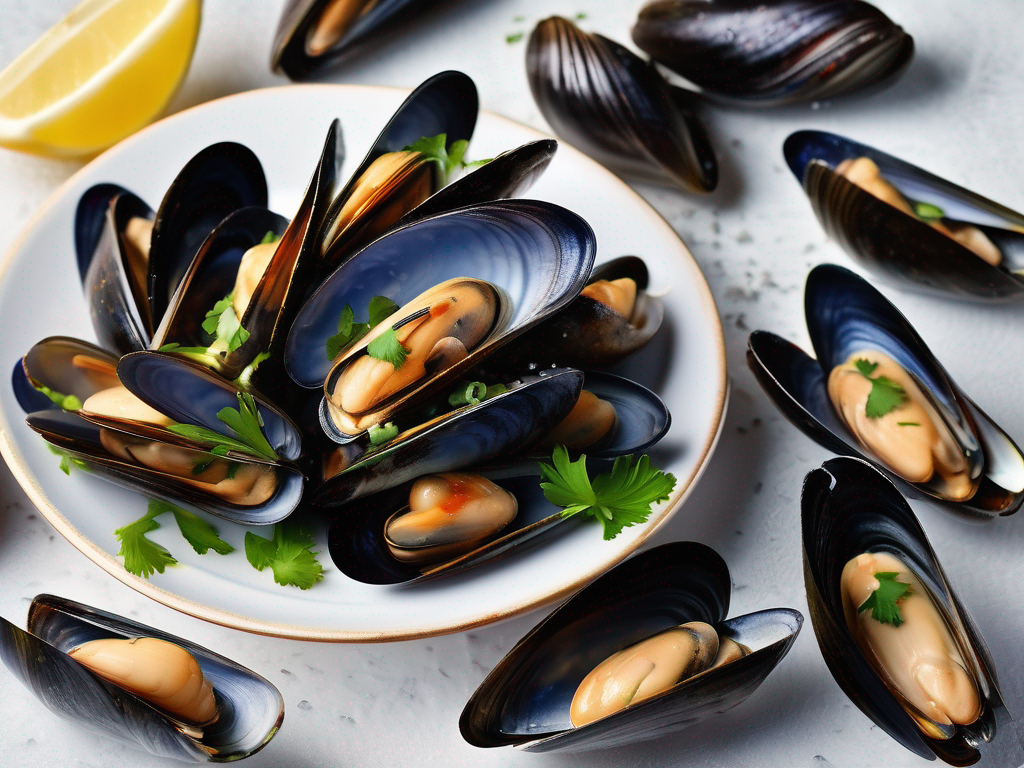
The Best Way to Defrost and Cook Mussels Purchased Commercially Frozen
Get Your Free Food Safety Cheat Sheet
30 most common foods with instant answers. Print it and stick it on your fridge—completely free!
The Best Way to Defrost and Cook Mussels Purchased Commercially Frozen
When it comes to enjoying the delicate and flavorful taste of mussels, opting for commercially frozen ones can be a convenient choice. However, it's essential to defrost and cook them properly to ensure they maintain their quality and are safe to eat. In this guide, we will walk you through the best practices for defrosting and cooking mussels purchased commercially frozen. (Mussels)
Understanding Commercially Frozen Mussels
Before diving into the defrosting and cooking process, it's crucial to understand a bit about commercially frozen mussels. These mussels are typically harvested, cleaned, and then flash-frozen to preserve their freshness. When properly stored and handled, commercially frozen mussels can be just as tasty and nutritious as fresh ones.
Benefits of Commercially Frozen Mussels
- Convenient and readily available
- Extended shelf life
- Retain freshness and flavor through the freezing process
Safety Considerations
- Ensure the mussels have been properly frozen and stored at the recommended temperature (-18°C or 0°F).
- Check the packaging for any signs of damage or thawing before purchasing.
Defrosting Commercially Frozen Mussels
Properly defrosting mussels is crucial to maintain their texture and flavor while ensuring they are safe to consume. Here are the recommended methods for defrosting commercially frozen mussels:
Refrigerator Method
- Place the sealed package of mussels in the refrigerator.
- Allow them to thaw slowly for 24-48 hours.
- Once thawed, use them within 1-2 days for the best quality.
Cold Water Method
- Fill a large bowl with cold water.
- Submerge the sealed package of mussels in the water.
- Change the water every 30 minutes to ensure they defrost evenly.
- Thawing typically takes 1-2 hours using this method.
Cooking Commercially Frozen Mussels
Once your mussels are properly defrosted, it's time to cook them to perfection. Here are some popular cooking methods for commercially frozen mussels:
Steaming Mussels
- In a large pot, add a splash of white wine, garlic, shallots, and a pinch of salt.
- Bring the liquid to a simmer.
- Add the mussels and cover the pot.
- Steam for 5-7 minutes or until the shells have opened.
Mussels in White Wine Sauce
- Sauté garlic and shallots in a pan with olive oil.
- Add white wine, lemon juice, and a pinch of red pepper flakes.
- Add the mussels and cover the pan, allowing them to steam for 5-7 minutes.
Grilled Mussels
- Remove the mussels from the shells and marinate them in a mixture of olive oil, garlic, and herbs.
- Place the mussels on a preheated grill and cook for 2-3 minutes on each side.
Safety Tips for Cooking Mussels
- Discard any mussels that do not open during the cooking process.
- Ensure the internal temperature of the mussels reaches 145°F (63°C) to kill any harmful bacteria.
- Avoid overcooking as it can make the mussels tough and rubbery.
Conclusion
Commercially frozen mussels can be a convenient and delicious addition to your meals when handled and cooked correctly. By following the proper defrosting methods and cooking techniques outlined in this guide, you can enjoy the unique taste and nutritional benefits of mussels without compromising on safety. Remember to prioritize food safety at every step of the process to savor these delectable seafood treasures. Enjoy your culinary adventures with commercially frozen mussels! (Mussels)
Authoritative Food Safety References
These agencies and university labs inform every tip and health precaution we publish.
USDA FoodKeeper – Cold Storage Guidelines
Official refrigerator, freezer, and pantry timelines maintained by the U.S. Department of Agriculture.
Visit USDA FoodKeeperFDA Produce Safety Rule & Grower Guidance
Field-to-fridge handling practices that prevent contamination of fruits, vegetables, and leafy greens.
Visit FDA Produce SafetyCDC Foodborne Illness Prevention Hub
Surveillance-backed guidance on pathogens, symptoms, and steps to reduce foodborne illness risk.
Visit CDC Food SafetyUC Davis Postharvest Technology Center
University research detailing optimal storage atmospheres for produce after harvest.
Visit UC Davis PostharvestPenn State Extension – Home Food Preservation & Safety
Peer-reviewed extension bulletins on safe canning, chilling, and reheating practices.
Visit Penn State ExtensionGet Your Free Food Safety Cheat Sheet
30 most common foods with instant answers. Print it and stick it on your fridge—completely free! Want more? Upgrade to the complete guide with 70+ foods.
Scan your food directly and get instant safety info using our AI-powered camera feature.